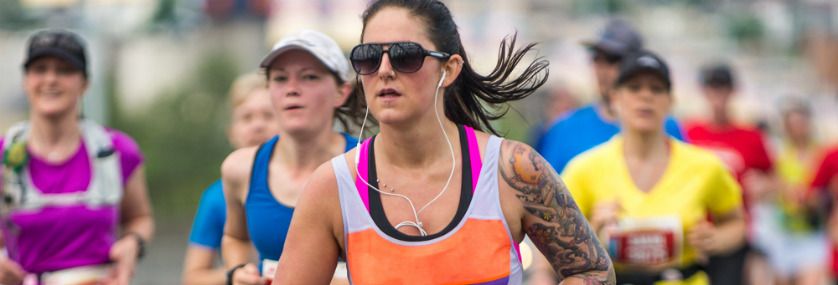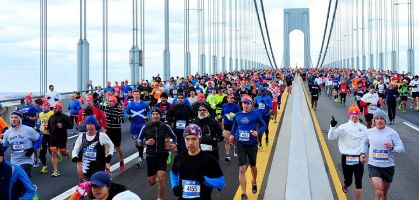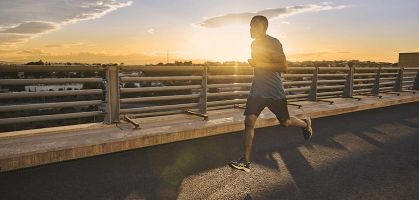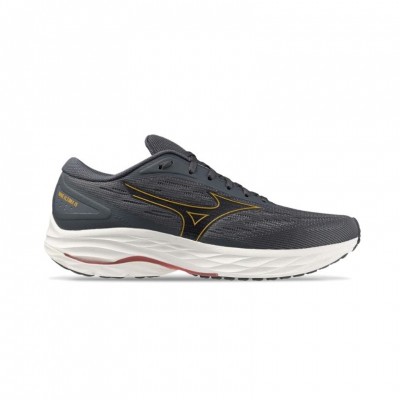Those of us who practice libre sports know how important it is to protect ourselves from solar radiation, which are electromagnetic waves that can be visible or undetectable, such as infrared and ultraviolet radiation.
As for the photoprotection of the skin, athletes must take into account that radiation is higher in summer because it travels a shorter path to reach the earth through the atmosphere, also at higher altitudes or in certain circumstances such as on days with clear skies or in the central hours of the day.
But we must also take into account the radiation reflected by the element on which we train, being 80% higher if it is on snow compared to the scarce 4% reflected by asphalt.
Within the ultraviolet radiation, UVB rays have increased as the ozone layer has deteriorated and they are attributed the responsibility of punctual burns and of favoring skin aging, even developing skin cancer. The popular UVA rays, because they reach the earth in greater quantities, are the ones that produce skin tanning, but their overexposure also favors skin aging and the development of cancers.
Although "The sun is health" because it stimulates the synthesis of vitamin D which favors bone strengthening preventing osteoporosis and because it produces a pleasant sensation by favoring the release of endorphins. We must take into account that we can receive an important amount of ultraviolet radiation if we do libre activities such as cycling, running or rowing during the central hours of the day or in those hours when the ultraviolet index is high.
The UVI is a measure of the intensity of the ultraviolet radiation with which the rays reach the Earth's surface. The higher the index, the higher the probability that exposure to UV rays will damage the skin and eyes, and the shorter the time it will take to do so.
- low exposure (less than 2) - moderate exposure3) - high exposure (6-7) - very high exposure (8-10).
When the amount or intensity of radiation that our skin receives is higher than healthy, the skin responds to the aggression by oxidizing and producing melanin, the pigment that tans us, resulting in greater protection against future aggressions. Burns occur when exposure to the sun's rays exceeds the skin's ability to generate melanin to defend itself, producing redness, inflammation or even blisters.
Frequent sunburn is known to be a risk factor for developing skin cancer.
What is your phototype ?
The exposure time necessary for the appearance of burns (in minutes) for skin type I is 10 minutes. For skin type II from 15 to 20 minutes, for skin type III from 30 to 45 minutes, for skin type IV from 60 minutes.
What type of protection do you need depending on your skin phototype?

The sun protection factor is used to estimate the time it takes for the skin to burn while protected. If on the first day you can expose yourself to the sun for 10 minutes and not get sunburnt, an SPF of 20 will protect you for 200 minutes (10 x 20). Remember that the recommended dose is 2 mg per cm2 for which it is recommended to apply a sufficient amount to cover the entire exposed surface.
Curiosities :
The use of sunscreen creams did not become widespread until World War II, when it was required to protect the skin of soldiers who were in the Pacific. It was Benjamin Green, a pilot who studied pharmacy, who discovered that red kerosene oil prevented the effects of ultraviolet radiation on the skin and patented the "Red Vet Pet" sunscreen.
Overexposure to solar radiation accelerates the aging process and is manifested by a loss of elasticity and a greater presence of wrinkles, especially on the face and neck.
Recommendations of the Spanish Academy of Dermatology and Venereology www.aedv.es
Tips and recommendations
To obtain an optimal result from the use of a photoprotector, it is necessary to follow four basic rules:
Apply the photoprotector half an hour before exposure. Do it on dry skin. Do not skimp. Repeat the application as necessary. Once these rules have been followed, the following recommendations should also be taken into account:
1 Avoid water sprays during exposures.
2 Avoid perfumes and alcoholic colognes containing vegetable essences because they are photosensitizing.
3 Choose the most suitable sunscreen according to your phototype.
4 Use it, even if it is cloudy.
5 Do not expose yourself to the sun between 11 am and 3 pm.
6 Protect your head with a hat or cap with a visor, your eyes with suitable sunglasses and your lips with lip balm.
7 Keep moving. It is not advisable to lie in the sun and stay still for hours.
8 Drink water or fluids to avoid dehydration.
9 Certain medications may cause reactions to sun exposure. Remember: start with a high SPF, especially during the first week of sun exposure, and reduce it over the following days.
GALIUS SUN SPF5 0
At runnea we have tested the NEW GALIUS SUN SPF50, a sunscreen cream for the face that we recommend you use because it is a product designed especially for athletes and because it has some interesting features.
Galius is a supplier of body care products for the professional cycling team MoviStar and offers in addition to a high sun protection a special performance for athletes: It does not slide with sweat and is water resistant!
It also comes in a 45 ml tube in an ergonomic and practical format, ideal for carrying it in your cycling jersey, in your cross-country skiing windbreaker or on the back of your tights.
Its main virtue besides not being greasy is that it offers high protection against UVA and UVB rays and does not melt with sweat, which prevents it from getting into your eyes and its effects are maintained during activities of maximum perspiration.
Read more news about: Sports Injuries




















